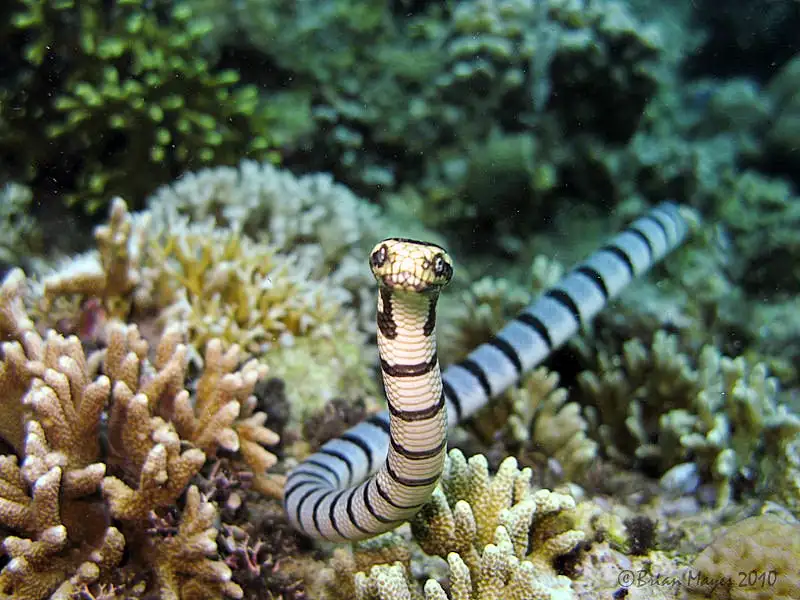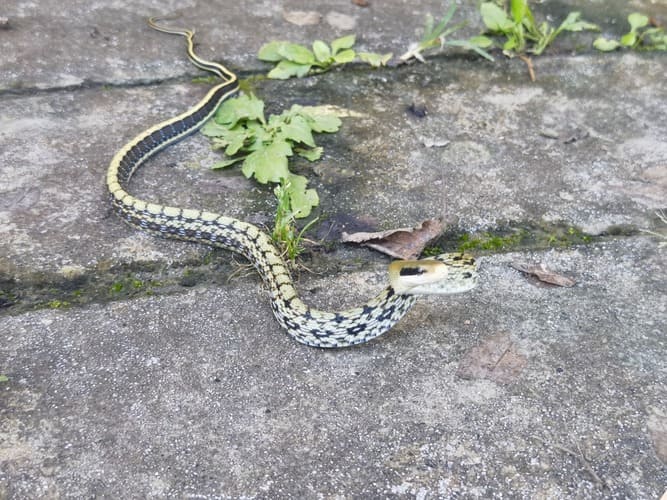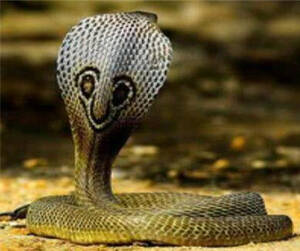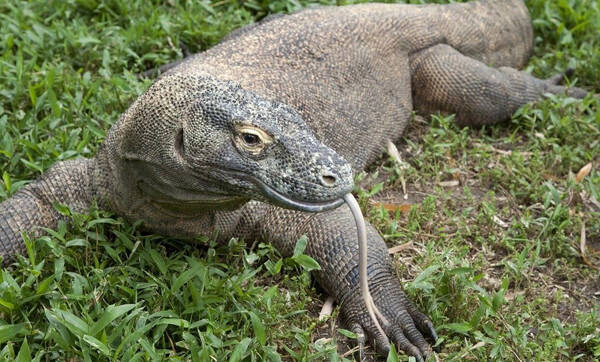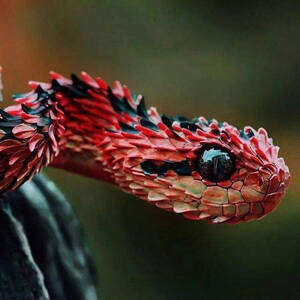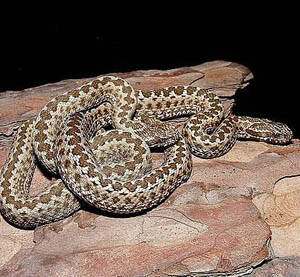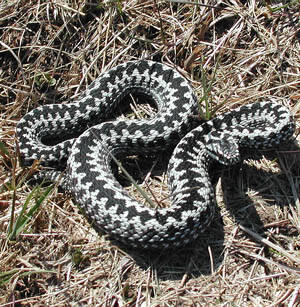Physignathus cocincinus
IUCN
LCBasic Information
Scientific classification
- name:Physignathus cocincinus
- Scientific Name:Physignathus cocincinus,Long rock agama,Water Dragon
- Outline:Squamata
- Family:Iguanidae Iguana
Vital signs
- length:16-31cm
- Weight:No verification information
- lifetime:8-10years
Feature
Good at swimming and tree climbing
Distribution and Habitat
Distributed in Cambodia, China (Guangdong, Guangxi, Yunnan), Laos, Thailand and Vietnam.
Appearance
The total body length is 702 (198+504) mm. The head is in the shape of a quadrangular pyramid, and the length of the head exceeds the width of the head; the parietal eyes are clear; the snout is blunt and round, with prominent snout edges; the upper ciliary ridge is obvious. The nostrils are located in the center of the nasal scales; the eyes are large; the tympanic membrane is large and exposed; the snout scales are much wider than the snout scales are high; there are 10 right and 12 left upper lip scales, and there is a row of large scales on the inside parallel to the upper lip scales; there are 10 lower lip scales. There is also a row of large scales on the inner side parallel to the lower lip scales, 10 in number; the frontal scales are narrow in front and wide in the back; the back of the head is covered with slightly ridged fine-grained scales; the temporal scales are large; the scales on the posterior and lower sides of the tympanic membrane and throat are conical, among which
Details
Long rock agama, no subspecies.

Long rock agama lives on bamboo branches near rivers and ditches with trees and rocks, in the forest or on sandy land. They are good at climbing trees, and live mostly on the trunks of old and large trees, in the cool grass near water, between trees, and in the cracks of rocks by the river; they crawl quickly, and when running fast, their front limbs stick to their bodies, and only their hind limbs touch the ground; they can live in caves in the sand. They are good at swimming, and when caught, they run quickly. In addition to eating, artificially raised long iguanas often crawl on branches and soak in water to cool down, and they excrete mostly in water. Long iguanas are active from March to November in southern China every year, and hibernate from December to February of the following year. During the hibernation period, the room temperature is controlled above 15℃, and long iguanas are still active, which is actually semi-hibernating, but they basically do not eat. In March, the weather gradually warms up, and long iguanas end hibernation and start eating, and their physical fitness improves. At this time, the individuals are brightly colored, more active, and live in caves.
Long iguanas feed on insects, snails, snails, small fish, and shrimps. Under artificial breeding conditions, they mainly feed on mealworms and crickets, supplemented with fresh green vegetable leaves and carrots, and also eat frogs and mice. They like to eat animal feed, and occasionally eat plant feed, but in small quantities.
Long iguanas enter the estrus mating period, and males begin to chase females for mates. Usually when the female lizard is eating, the male lizard approaches the female lizard, and once the female lizard sees the male lizard, it will run fast. At this time, the male lizard chases and bites the side of the female lizard, flips the female lizard over with force, and sweeps the tail base to mate. At this time, the abdomens of the male and female are facing each other, and the hind legs are staggered. The male lizard has a pair of hemipenes buried in the penis sac at the base of its tail. When mating, the hemipenes on one side are turned out and inserted into the female lizard's cloaca hole for mating. The female lizard mates once. After the eggs are fertilized in the body, fertilized eggs are produced.
Long iguanas lay eggs from March to July, with the peak period from May to June. Before laying eggs, they dig holes and then lay eggs in the holes. Before laying, they often dig holes in the loose soil under rocks. When digging holes, female lizards use their forelimbs to dig the soil and their hind limbs to push the soil backwards. They first dig straight and deep, and then expand to both sides. The hole is about 15-20 cm deep. From digging holes to laying eggs, it sometimes takes a week, but most of the holes are dug 2-3 days before laying eggs. Sometimes, they rest for a while after digging holes and then start laying eggs.
Before laying, the abdomen of the female lizard is obviously swollen, the body color is bright, and the movements are slow. The egg-laying time lasts 10-30 minutes. After the egg-laying is completed, the long iguana uses its four limbs to cover the excavated soil on the egg-laying nest alternately, and then compacts the soil with its head. After laying, the female lizard has a dull body color and stays by the egg nest for a long time without leaving. There is a certain regularity in the egg-laying time, mostly at dusk 17:00-19:00, and occasionally at noon. A mature female lizard can lay 2-3 nests of eggs in a year, with an interval of 33-45 days, and the number of eggs in the nest is 7-18. The eggs of the long iguana are oblong, white, and the egg shell is leathery and soft. The average egg weight is 3.06 (2.80-3.50) grams, and the egg diameter is 2.63 cm × 1.18 cm. The quality and size of eggs vary. Good eggs have a full and elastic surface, with a proper ratio of length to short diameter. Poor eggs have a concave surface, are not full, have an improper ratio of length to short diameter, and are either too long or too short.
In the late incubation period, the egg shell is leathery and soft, and absorbs water and expands. The egg weight increases from 3.06 grams to 8.50 grams, and the egg diameter increases from 2.63 cm × 1.18 cm to 2.63 cm × 2.00 cm. The egg shell becomes thinner, making it easier for the young lizard to tear the shell and break out. After the shell, the young lizard drills out of the sand where it was hatched.
In late March 2022, a team of reptile research experts, photographers, and hikers discovered the national second-level key protected wild animal, the iguana, while observing, hiking, and photographing wild animals in Conghua District, Guangzhou. The species is also listed as vulnerable in the IUCN Red List and was once considered extinct in the wild in Guangzhou.
Listed in the "Red List of Endangered Species of the World Conservation Union" (IUCN) 2017 ver 3.1-Vulnerable (VU).
Listed in the "National List of Terrestrial Wildlife with Important Economic and Scientific Research Value" issued by the State Forestry Administration of China on August 1, 2000.
Listed in the "Red List of Biodiversity in China" (Reptiles) - Endangered (EN).
Listed in the "Red Data of Endangered Animals in China" - Endangered (EN).
Listed in the "List of Key Protected Wildlife in Guangdong and Yunnan Provinces of China".
Listed in the second level of the "List of Key Protected Wildlife in China".
Protect wildlife and eliminate game.
Maintaining ecological balance is everyone's responsibility!

